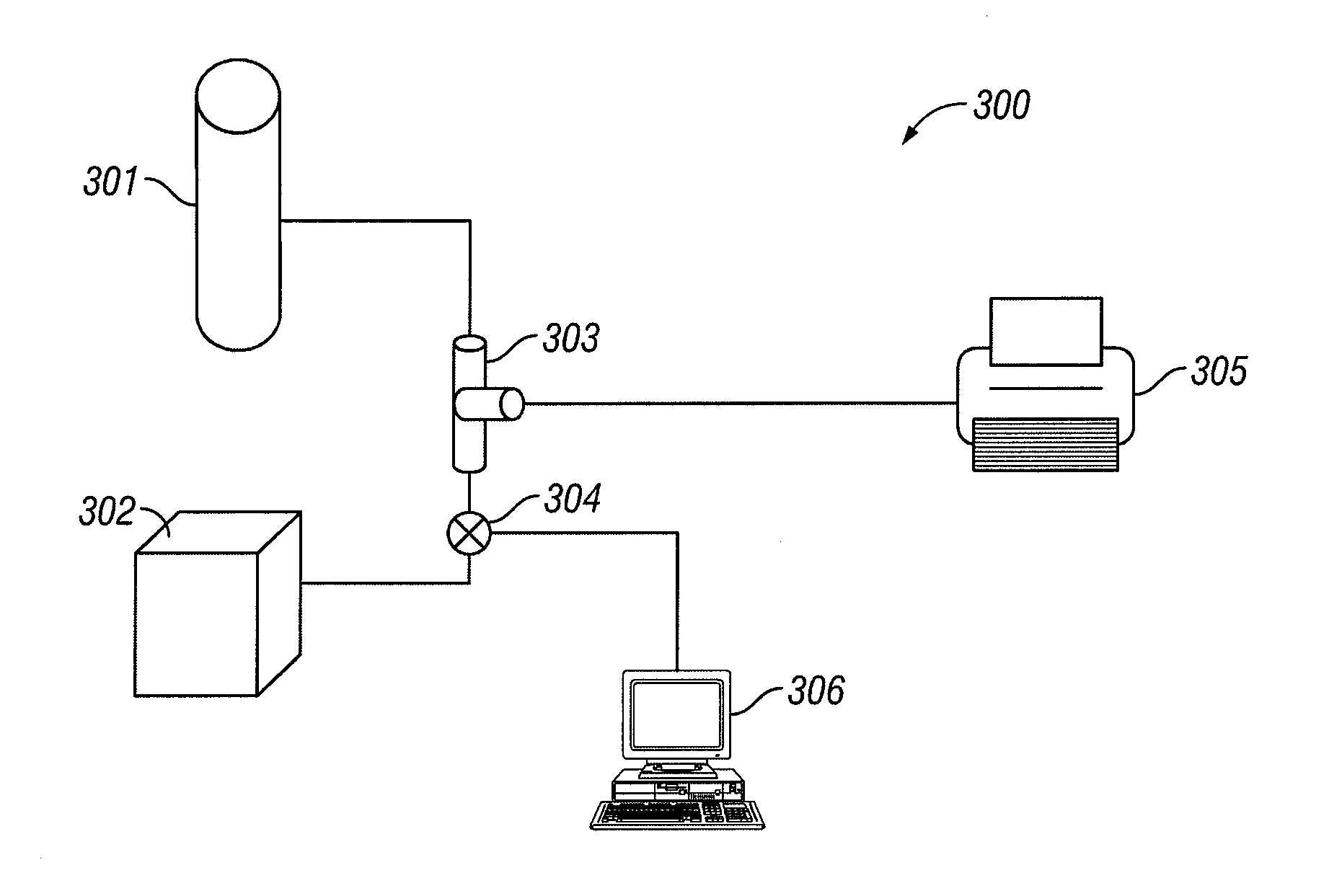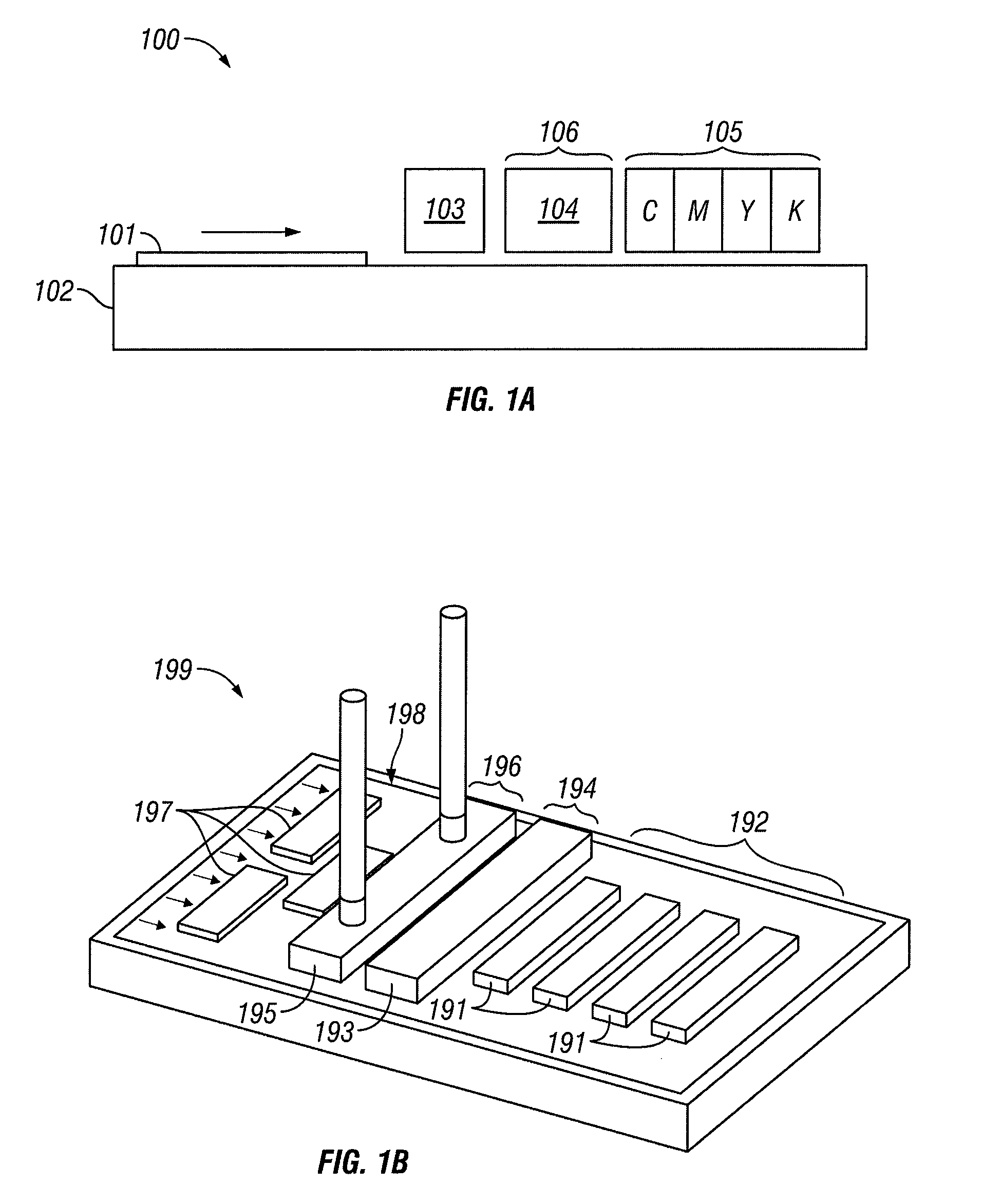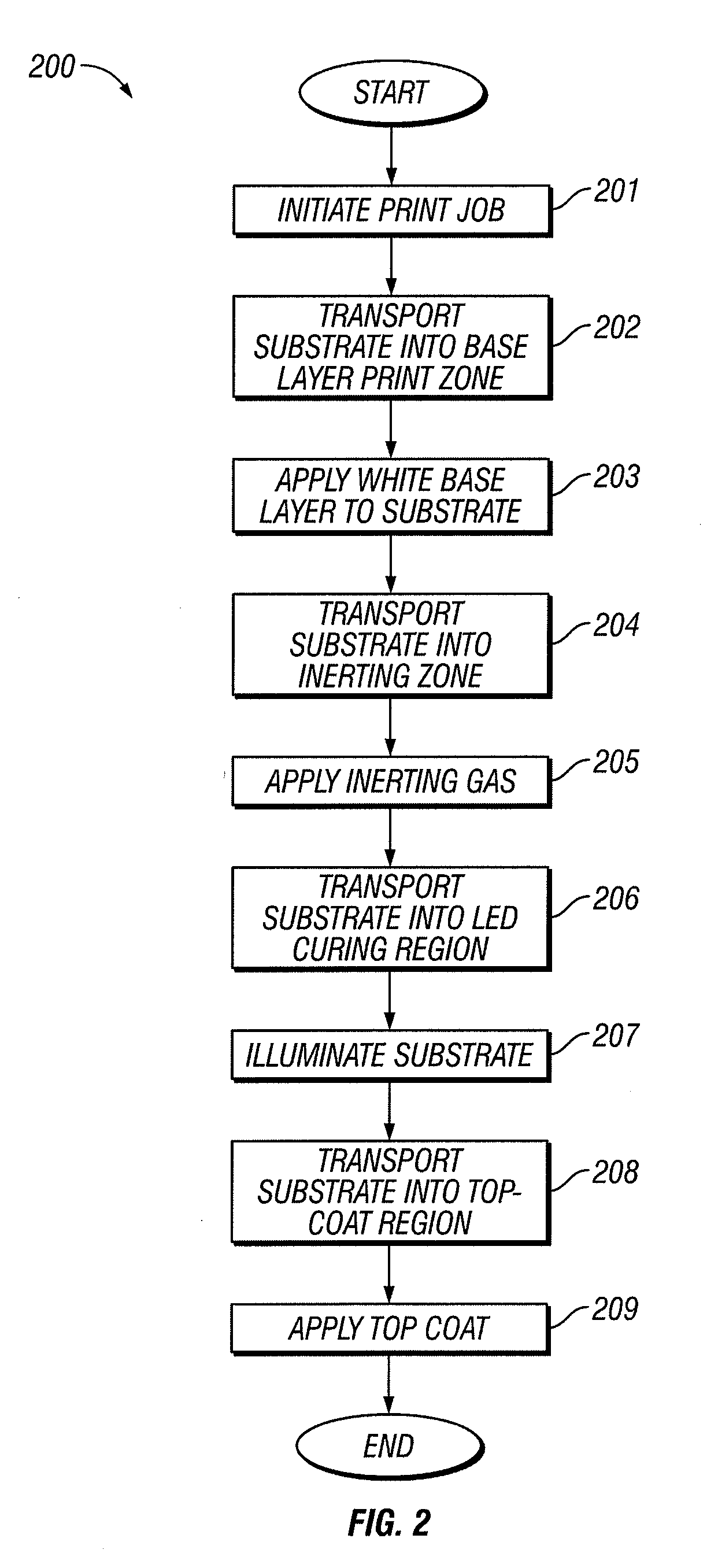InkJet printer with controlled oxygen levels
a technology of oxygen level control and printer, which is applied in the direction of printing, duplicating/marking methods, printing, etc., can solve the problems of increasing ink cost, increasing power requirements and heat generated on the sample, and affecting the final film properties
- Summary
- Abstract
- Description
- Claims
- Application Information
AI Technical Summary
Benefits of technology
Problems solved by technology
Method used
Image
Examples
example
[0066]Examples of the printing process are described below. Representative examples of samples printed under various levels of oxygen are discussed herein with reference to FIGS. 4A, 4B, and 4C.
[0067]In prior art focus is on decreasing energy required for cure by decreasing oxygen to as low a level as possible in the curing environment. The example herein shows that extremely low oxygen levels do not give ideal print characteristics. Instead, there is an ideal range of oxygen concentration that will yield optimal print characteristics, including, but not limited to mar resistance, dot gain, and adhesion.
[0068]In this example, a printer is described that deposits a white ink formulated to cure under an LED light source. This white ink is comprised of acrylate monomers and oligomers, photoinitiator, dispersed pigment, and additives. Mixtures of acrylate monomers and oligomers are found in concentrations of 30 to 70% by weight, more ideally from 40-60% by weight. Mixtures of photoiniti...
PUM
| Property | Measurement | Unit |
|---|---|---|
| adhesion | aaaaa | aaaaa |
| chemical composition | aaaaa | aaaaa |
| chemical | aaaaa | aaaaa |
Abstract
Description
Claims
Application Information
 Login to View More
Login to View More - R&D
- Intellectual Property
- Life Sciences
- Materials
- Tech Scout
- Unparalleled Data Quality
- Higher Quality Content
- 60% Fewer Hallucinations
Browse by: Latest US Patents, China's latest patents, Technical Efficacy Thesaurus, Application Domain, Technology Topic, Popular Technical Reports.
© 2025 PatSnap. All rights reserved.Legal|Privacy policy|Modern Slavery Act Transparency Statement|Sitemap|About US| Contact US: help@patsnap.com



